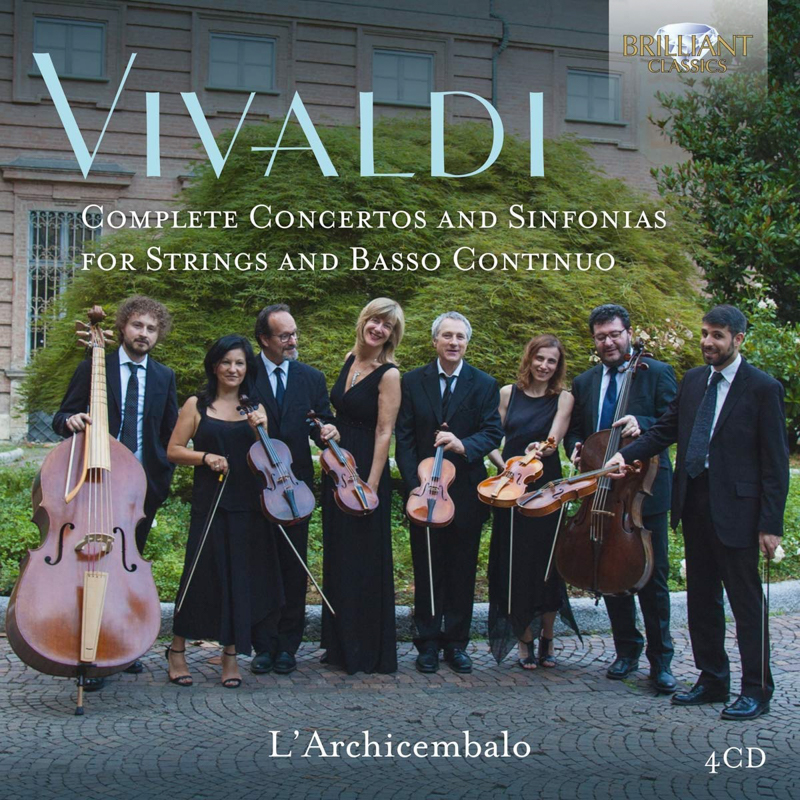Vivaldi: Les concertos et sinfonias pour cordes. L’Archicembalo
Review by Olivier Fourés | Diapason
An exhilarating romp through the Venetian prince of the Italian Baroque: 50 works, many of them still little-known, in historically informed performances with plenty of impact and colour. Founded in 2000, L’Archicembalo is a period ensemble of top-notch Italian musicians who have played with all the major native exponents of Baroque music such as Giovanni Antonini and Giuliano Carmignola. According to La Stampa, the ensemble ranks among the most inspiring and authoritative Vivaldi interpreters of our time. Part of this collection was released separately in 2015, and attracted glowing reviews: ‘The tempi are well chosen, without exaggerations, but also without being too slow… Italian ensembles have shown that [these Sinfonias] are more than nice fillers in a programme of solo concertos. In this recording the polyphonic, theatrical and expressive qualities of these pieces are brought to light´ What sets apart these concertos and sinfonias from the multitude of other such works composed by Vivaldi is the lack of a solo instrument. Yet with his usual, inexhaustible fertility of invention, Vivaldi turned this apparent lack into an opportunity to explore the possibilities of development and counterpoint more extensively than was possible in the oppositional and accompanimental language of the solo concertos. After a dashing opening movement there is generally a central Adagio, in the form of a tripartite song or a simple sequence of chords. This is followed by a lively, dancelike movement in two parts with two refrains. On occasion this finale is replaced by a technically superlative Fugue that displays Vivaldi’s mastery of counterpoint. Sometimes the Fugue is placed at the beginning of the Concerto, perhaps implying the original context of the work as the instrumental introduction to a solemn Mass. In complement to the concertos, the Sinfonias generally feature bolder and more brilliant string writing, evidently for use as the curtain-raiser to a theatrical event, though they now stand perfectly well on their own.

Discover the CD Vivaldi – Complete Sonatas and Sinfonias for Strings and Basso Continuo here!